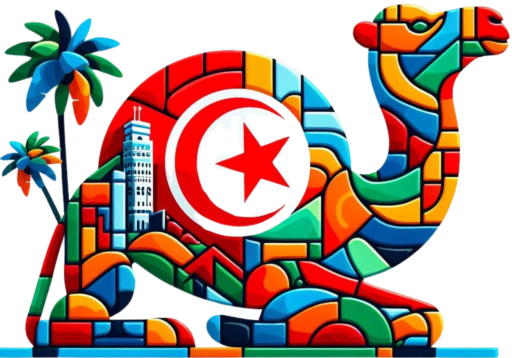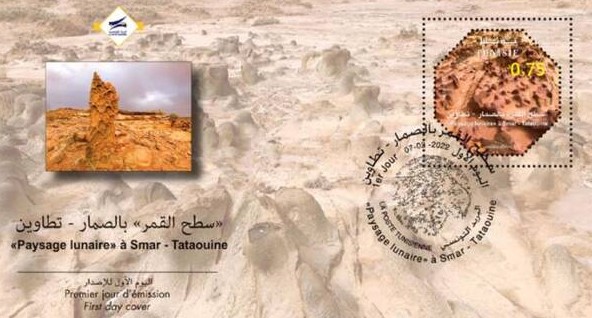Historical notes on Tunisian philately
It is said that the first conditions for a postal service in Tunisia were created back in 1847. It should be noted that a very strong push was given by the French administration, which practically organized them.
In 1881 there were still seven postal “offices” located in the various coastal ports and in any case always managed by French representatives.
A new concordat was signed on 01/07/1888, by the Tunisian post and telegraph office. It establishes offices in which French stamps are used and the day following the agreement, i.e. 02/07/1888, the first Tunisian stamp is issued.
The new stamp
The Tunisian Post Office has recently issued a special octagonal stamp depicting the spectacular “lunar landscape” of Smar, east of the governorate of Tataouine.
An area of about 29 hectares, in which the rocks, perhaps from the Triassic era (approximately around 200-300 million years ago), take on red and black appearances that recall the surface of the Moon. This distribution, as can be understood from the Tunis post office website, aims to help raise awareness of the natural places that Tunisia is well equipped with, distinguished by some geological, environmental and ecological characteristics.
The value of the stamp issued is 0.75 dinars (corresponding to our 0.25 euro as of today 03/18/2022), the stamp, created by Hédi Ben Jedyen, is also distinguished by its octagon-shaped perimeter, represents an original event for the Tunisian Post Office.
At the beginning of 2022, a new perforating machine was introduced which allows, on the one hand, to differentiate conditions and formats “in response to the expectations of philatelists” and, on the other, to further strengthen the safety.
For those interested, the postmark is on sale in all offices in the country and on the internet, by doing a search by clicking here.
To read other interesting articles, click here.





